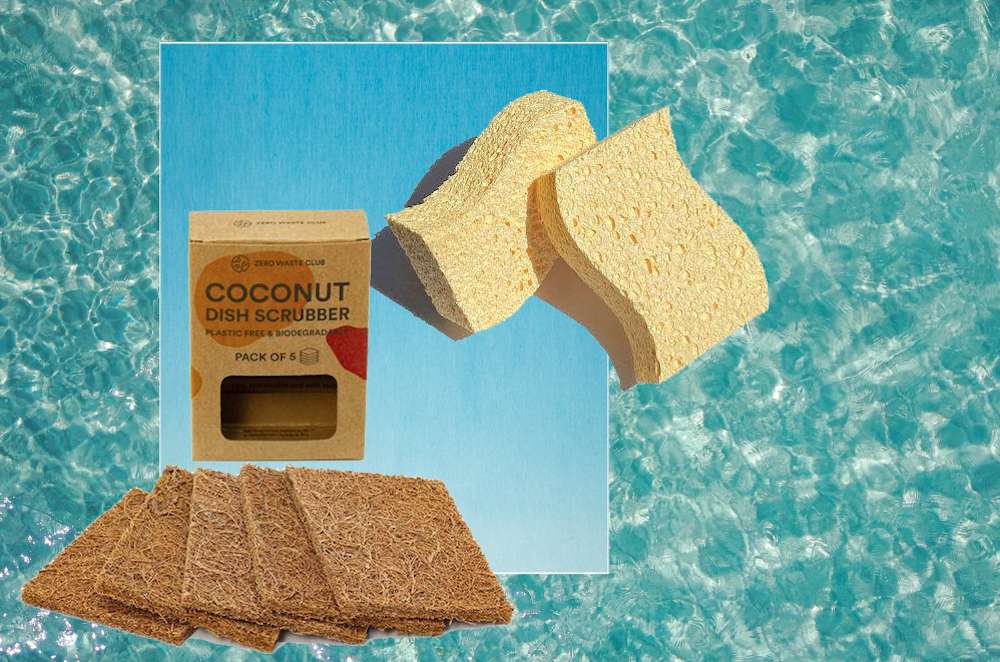Kitchen sponges are a common household item used for various cleaning tasks. However, their convenience comes at an environmental cost. Traditional kitchen sponges are often made from non-biodegradable materials and contribute to plastic waste and pollution. Thankfully, there are sustainable alternatives available that can help reduce our ecological footprint. In this article, we will explore the environmental impact of kitchen sponges and highlight sustainable options that can make a positive difference.
The Problem with Traditional Kitchen Sponges
Traditional kitchen sponges are typically made from synthetic materials, such as polyurethane foam or plastic. These materials are not biodegradable and can persist in the environment for hundreds of years. When disposed of improperly, they end up in landfills or oceans, contributing to plastic pollution and harming marine life.
Plastic Pollution and Microplastics
When traditional sponges break down, they can release microplastics into the environment. These tiny particles of plastic pose a significant threat to marine ecosystems, as they can be ingested by marine organisms and work their way up the food chain. Additionally, microplastics can also find their way into our water sources and ultimately impact human health.
Sustainable Sponge Alternatives
- Natural Fiber Sponges: Consider opting for sponges made from natural fibers such as cellulose, loofah, or plant-based materials. These sponges are biodegradable, compostable, and have a lower environmental impact compared to their synthetic counterparts.
- Biodegradable Sponges: Look for sponges specifically labeled as biodegradable or compostable. These sponges are designed to break down naturally over time, reducing the waste that ends up in landfills or oceans.
- Bamboo-based Sponges: Bamboo is a highly sustainable material due to its fast growth and minimal environmental impact. These eco-friendly sponges are made from bamboo fibers are durable and biodegradable.
- Silicone Sponges: Silicone sponges are a durable and long-lasting option. They are reusable and don’t release microplastics when used or washed. Silicone sponges are easy to clean, making them hygienic and environmentally friendly.
Cleaning and Maintaining Sustainable Sponges
- Proper Cleaning: Regardless of the sponge type, it’s crucial to clean them thoroughly after each use. Rinse out food particles and debris, and disinfect them regularly to prevent bacterial growth.
- Air Drying: Allow sustainable sponges to air dry completely after use. This helps prevent the growth of bacteria and extends the lifespan of the sponge.
- Regular Replacement: While sustainable sponges are more eco-friendly, they still have a limited lifespan. Replace them when they show signs of wear and tear to maintain their effectiveness.
Supporting Sustainable Brands
Look for brands that prioritize sustainability in their sponge production. Research companies that use eco-friendly materials, have ethical manufacturing practices, and contribute to environmental initiatives. Supporting such brands encourages the growth of sustainable options in the market.
As consumers, we have the power to make environmentally conscious choices, even in our everyday cleaning tools like kitchen sponges. By understanding the environmental impact of traditional sponges and exploring sustainable alternatives, we can take steps towards reducing plastic waste and pollution. Choosing biodegradable, natural fiber, bamboo-based, or silicone sponges, and adopting proper maintenance practices, we can make a positive impact on our planet’s health. Let’s embrace sustainable options and contribute to a greener future in our kitchens and beyond.
